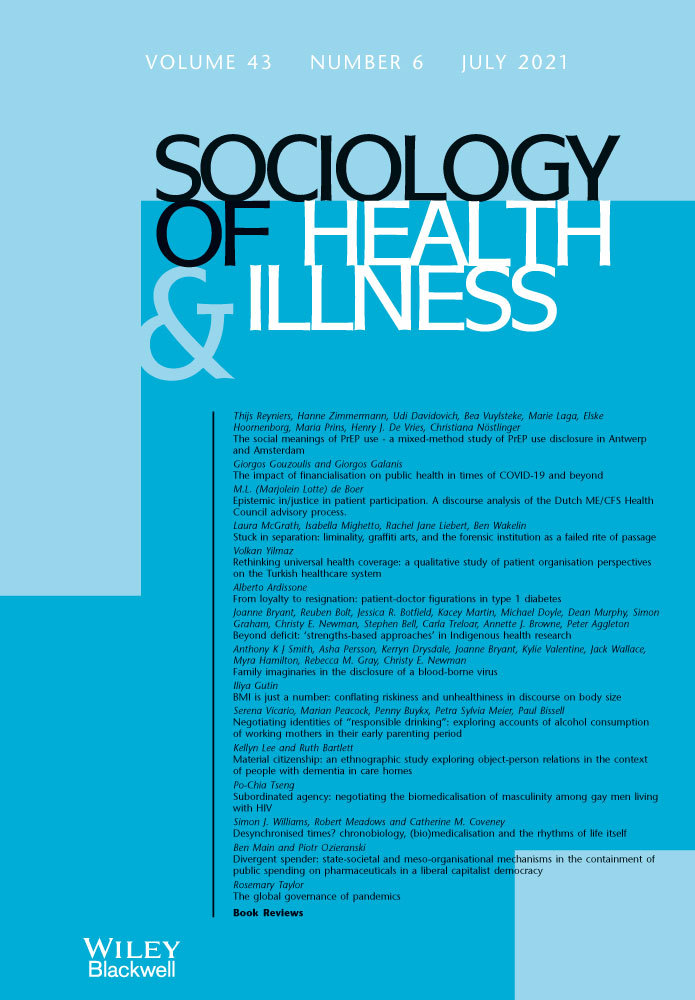Healers and Patients Talk – Narratives of a Chronic Gynecological Disease , London: Lexington Books. 2020. 260pp $95.00 (hardback). ISBN 978-1-7936-0187-2, $90.00 (ebk) ISBN 978-1-7936-0188-9
This book addresses the social construction of endometriosis. Ground-breaking ethnographic research, carried out between 2013 and 2014 in the UK by physician and anthropologist Véronique Griffith, reopens the historical gender issues surrounding the female body and its 'singularly feminine' diseases. In frank and provocative questioning, the author asks profound questions about the ordeal women are subjected to by GPs and gynaecologists in their quest to obtain the diagnosis of endometriosis (endo).
The book appears to be divided into three core sections: In the first part of the book (Chapters 1 to 3), Griffith gives the reader a breakdown of the basic and crucial problems surrounding endo. The author also revisits the histories of diagnosis and menstruation.
Griffith proceeds to reopen the thorny issue of the gendered process of endo diagnosis. There is effectively no uniform definition of what endo is, and there are various differing criteria for diagnosing the disease. Often, the physical symptoms (pelvic pain) of endo are glossed over by physicians as merely psychological problems associated with the ‘very normal’ female sex life. Women are comforted with gynaecological jargon such as 'it's all in your head', 'when you get pregnant, everything will be fine'. In addition to this, there is the folklore that every menstrual cycle is always painful, stressful and inherently linked to womanhood. Women are usually obliged to be satisfied with such clichés as: ‘It’s your normal period’, ‘normal period pain’, ‘normal period cramps’.
GPs and gynaecologists are the professionals who often fail to give the diagnosis of endo. To study women undiagnosed for numerous years before being attributed an endo label (on average seven years), Griffith proposes a new category of analysis, namely the a-diagnostic category. This category of analysis is leading edge in the literature and can potentially be applied to other chronic diseases.
In this central part of the book (chapters 4 and 5), Griffith recounts her ethnographic visits to the gynaecological clinic. This ethnographic part is a highlight in her work. A significant finding in the biomedical construction of endo is that it takes place on two different levels: The official line is that of the public health epidemiology of endo, and the second level is that of physicians, which Griffith calls the lay professional epidemiology of endo (which differs notably from the official guidelines). This is an important finding in this research that partially helps to explain the chaotic process before obtaining the diagnosis. The lay epidemiology of endo prescribes for example that teenagers cannot be diagnosed with endo because menstrual cycle pains at this stage are natural; another glaring example is that menopausal women cannot be diagnosed with endo either.
Also, in the clinic, Griffith makes a thorough analysis of the web of relationships involving physician, patient and nurse. She believes that interactions between physicians and patients are not a power struggle relationship. She sees it as a relationship of joint collaboration and discovery. Both parties deal with feelings of powerlessness weakened by the disciplinary power of biomedicine. The research makes it clear not only that nurses and physicians lack control strategies to deal with disciplinary power, but also that patients are imbued with control strategies. Women use these control strategies before, during and after the clinic visit to cope and strengthen themselves in the quest to be given the endo label.
In the final part of the book (chapters 6 to 8), Griffith expands her ethnography beyond the medical clinic. This part brings a unique contribution to the studies of endo. Griffith explores the social constructions of endo from the perspective of endo-afflicted women. Patients report, for example, that medicine completely refuses to consider the psychosocial factors of this chronic disease. Endo not only causes extreme physical suffering, but also has devastating consequences upon mental health, work, sex life with a partner and in general social relationships.
The use of visual representations of endo is also unprecedented. Women with endo have met up online and sought to share their physical and mental suffering. Griffith analyses several images that were posted in the endo groups. It is vital to note the therapeutic effect of these representations at ontological and group level. It is also important to emphasize the therapeutic potential of visual representations of endo that can be utilised by physical and mental health professionals.
This manual is an indispensable reference in the field of endometriosis and related fields. Griffith's research was conducted in the global North, with a female population within the English public health system, and the participants of the research are all from the Anglo-Saxon world. However, the geography of the fieldwork does not imply limitations to its use at the global academic and professional level. Griffith gives an international flavour to her book as she herself moves professionally between the USA and Europe.
The author touches upon the issues of race, ethnicity and social class in the social construction of endo, without going into the issue in depth. She mentions these intersections but does not go into detail. These intersections remain vital to the understanding of the social construction of endo. According to Griffith, the lay epidemiology of endo has created a social divide between career women as officially diagnosed with endo, as opposed to family women who are said to have mere 'psychological problems' due to their perceived lower sociological status.
This book reveals questions that go far beyond endometriosis. Griffith raises fundamental questions about the lack of studies on gender and female sexuality in medical education; it also subtly emphasizes the lack of communication between gynaecology, psychiatry and psychology.




